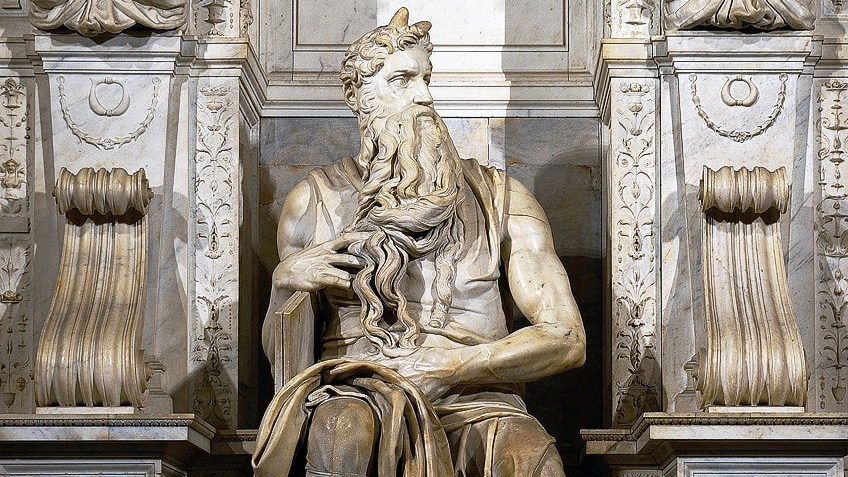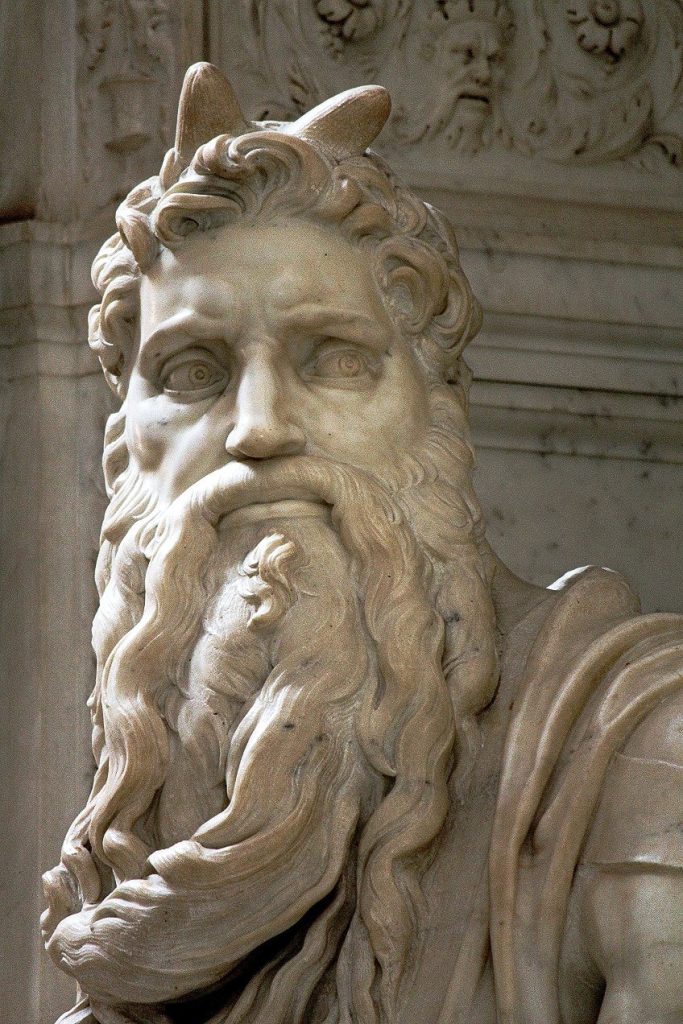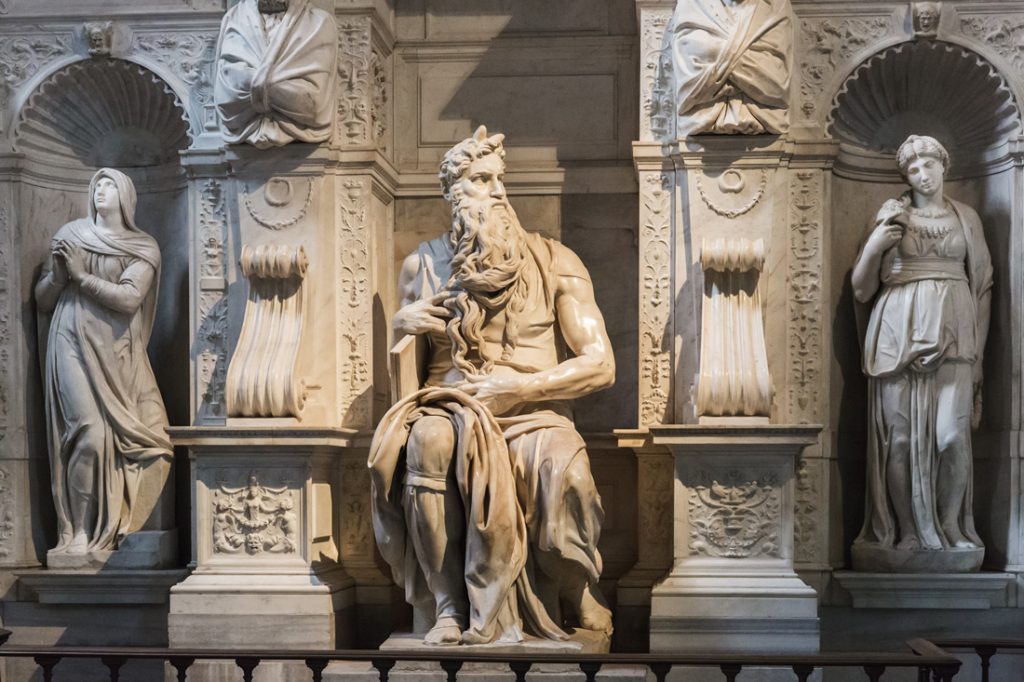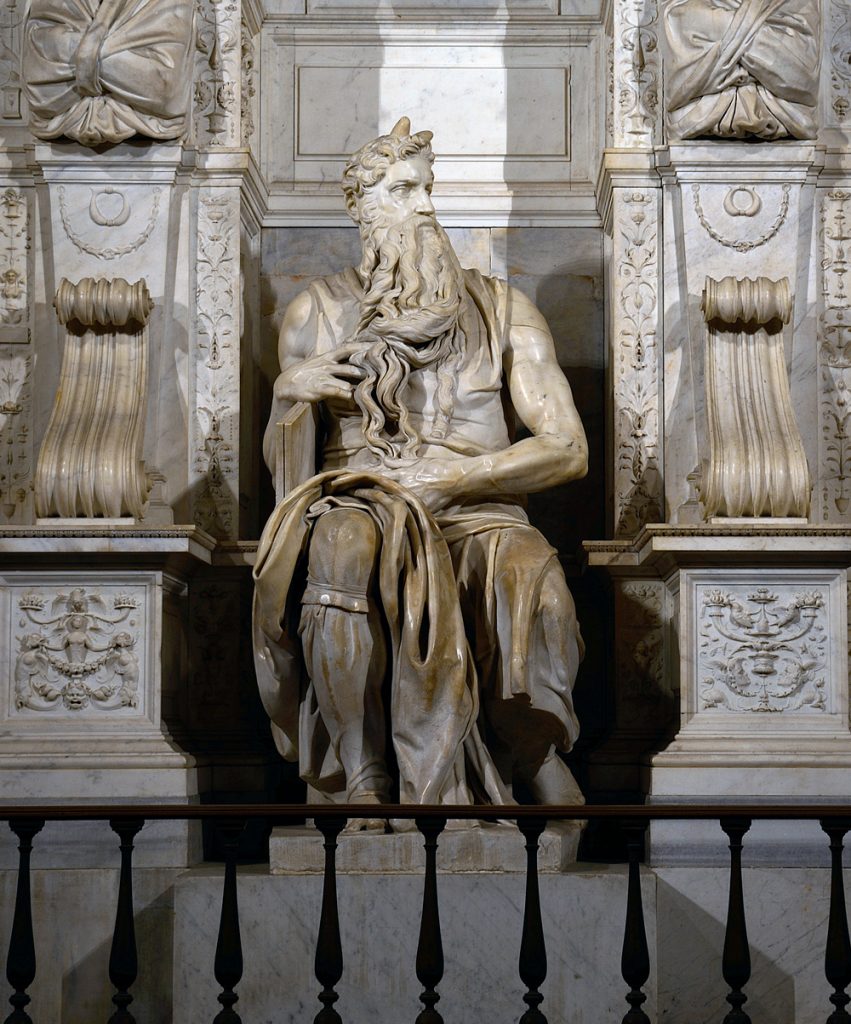Introduction of michelangelo’s moses

The great sculptor of the Renaissance, Michelangelo Buonarroti, created numerous masterpieces, one of which was the Moses. This magnificent Michelangelo’s Moses is not only the pinnacle of Renaissance art, but also a treasure of Italian culture. This article will provide an in-depth introduction to Michelangelo’s Moses, including its historical background, creative process, artistic characteristics, and its position in world culture.
Historical Background
Michelangelo (1475-1564) was one of the most outstanding artists of the Renaissance period, known for his multiple talents in painting, sculpture, and architecture. The creation of ‘Moses’ began in 1501, when Michelangelo was commissioned by Pope Julius II to decorate the Tula Jumen in St. Peter’s Cathedral. This magnificent sculpture can be regarded as the pinnacle of human art and an important part of Michelangelo’s artistic career.
Creative process

The creation of ‘Moses’ lasted for many years and was full of challenges and passion. Michelangelo transformed a piece of marble into the image of this biblical prophet, and he almost carved the entire statue with one hand, demonstrating his extraordinary skills and perseverance. Michelangelo even went to Rome’s tomb at night to excavate human bones in order to better understand the structure of the human body. These studies enabled him to create vivid and realistic character images.
Artistic characteristics
Moses showcases Michelangelo’s unique style and artistic characteristics:
Amazing details: The statue is filled with stunning details, from Moses’ expression to his long hair and beard, all lifelike.
Strong expression: Michelangelo conveyed complex emotions through Moses’ expression, including anger, determination, and inner conflicts.
Dynamic feeling: Although the statue is stationary, it exudes a sense of movement, as if Moses would stand up from the base at any time.
The magnificent anatomical structure: The muscular structure and posture of the statue demonstrate Michelangelo’s profound understanding of human anatomy, which is also his outstanding feature as an artist.

The Status of Moses in World Culture
Moses is not only a statue, but also a symbol of culture and religion. It holds an important position in world culture:
Religious symbol: As an image of Moses, this statue holds special symbolic significance in Christian religion. It represents the historical event of Moses leading the Israelites out of Egypt and his acceptance of the Ten Commandments of God.
The pinnacle of the Renaissance: “Moses” is one of the representative works of the Renaissance, showcasing the combination of art and science. It proves that artists can create amazing works through meticulous observation and the application of skills.
The Love of Tourists and Scholars: Since its inception, Moses has been attracting tourists and scholars from all over the world for hundreds of years. It is located inside St. Peter’s Basilica in Rome and attracts millions of visitors every year.

Conclusion of michelangelo’s moses
Michelangelo’s “Moses” is a great masterpiece of human art, surpassing the times and representing the art and culture of the Renaissance. This statue is not just a static stone sculpture, it is full of vitality and emotion, making the viewer deeply immersed in it. It is also a profound reflection on religion, history, and art, which will forever be engraved in the annals of world culture. Michelangelo’s “Moses” is an outstanding manifestation of human creativity and an eternal beauty of art.

